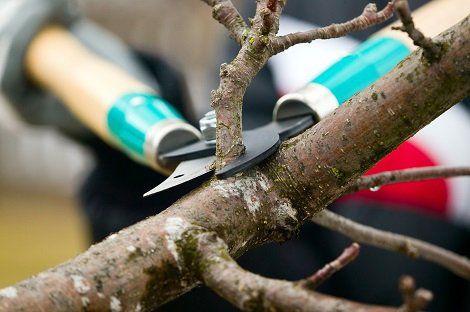CALL US TODAY!
What Homeowners Should Know About Asian Citrus Psyllids
Do you have citrus trees in your yard? Many Sacramento-area homeowners enjoy mandarin, lemon, key lime, tangelo, and kumquat trees. Their compact size and fragrant spring blossoms make citrus trees a popular landscaping choice.
Unfortunately, the invasive Asian citrus psyllid carries a deadly citrus tree disease. It was recently found in Sacramento County, prompting the California Department of Food and Agriculture to issue a citrus tree quarantine. A quarantine is necessary to protect commercial citrus fruit growers. Here is what homeowners with citrus trees should know about the Asian citrus psyllid and the citrus huanglongbing disease they can cause.
What Is an Asian Citrus Psyllid?
Asian citrus psyllids are tiny brownish insects that are only about one-sixth to one-eighth of an inch in length at adulthood. They have small antennae, red eyes, and a mottled stripe down their back. An adult Asian citrus psyllid feeds with its tail in the air, unique in the citrus insect world. This trait can help identify it.
Adults live for only a month or two, but females can lay hundreds of eggs in that time. She lays her eggs in the folds of new leaves. The nymphs will feed on sap from this plant tissue during their four to five instars, or molting processes, before reaching adulthood.
These destructive insects originated in eastern Asia or the Indian subcontinent, where they have since spread to the other citrus tree growing areas of the world.
In the United States, Asian citrus psyllids were first discovered in Florida in 1998. The pest - and the deadly bacterium it carries - reached Southern California by 2008 and has since spread to the Central Coast, Central Valley, and points north as far as San Francisco and greater Sacramento.
How Do Asian Citrus Psyllids and Huanglongbing Disease Affect Citrus Trees?
Asian citrus psyllid nymphs damage citrus trees by feeding on developing leaves. As they feed, they inject a salivary toxin. This toxin inhibits or slows leaf growth and causes leaves to curl. The curling of leaves itself will not kill a citrus tree, but it will hinder their growth. The toxin can also encourage a sooty mold on the tree's leaves.
Without healthy leaves, a tree cannot conduct photosynthesis, the process by which trees use the sun to make nutrients. When a tree doesn't have enough nutrients, it can't grow as big. When Asian citrus psyllids eat infected citrus trees, they spread the bacteria to other citrus trees when they feed. It takes only a few psyllids to inoculate a tree with the bacterium.
A citrus tree infected with the bacterium that develops citrus huanglongbing disease will die within five years. Huanglongbing disease is often referred to as citrus greening disease. Citrus fruit must ripen while it is still on the tree. With Huanglongbing disease, the fruit often stays green and never ripens.
The disease also causes deformed and misshapen fruit that tastes bitter. The leaves will partially yellow, staying green on one side and turning yellow on the other. Unfortunately, symptoms of citrus huanglongbing disease don't show up in a citrus tree and its fruit for two or more years, so the disease often spreads far before you can diagnose the problem.
How Are Asian Citrus Psyllids and Huanglongbing Disease Treated?
If a homeowner suspects their citrus fruit tree has Asian citrus psyllids, a tree service can apply an insecticide to control the pests. Huanglongbing disease has no cure — a tree service must cut down any affected trees. The California Department of Food and Agriculture officials may come and inspect the tree(s) to confirm the presence of the insects, disease, or both.
Many diseases and pests can affect citrus trees. If you suspect your citrus trees have an insect infestation or if they show signs of disease,
contact us today.
Browse Our Website
Contact Information
Phone: (916) 383-7413 | 916-925-0328
Address: 8511 Elwyn Avenue Elverta, CA 95626
State Contractors License # 861149
County Contractors License # 321511
City Contractors License # 141468
Special Contractors License # 609581


